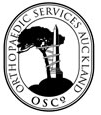Bunion Surgery
Surgery for bunions often fills people with dread because of the fear of pain. The reason for this is that previous generations have suffered at the hands of orthopaedic surgeons using ill-designed and painful operations.
This is now a thing of the past and bunion surgery can now be undertaken with a bare minimum of pain. In fact, the main concern is doing the right kind of corrective procedure to get the right result.
It all depends on how bad the bunion is as to what type of operation will be needed to correct it properly. With a severe bunion deformity a 3-level correction may be needed, involving a corrective bone cut in the mid- foot to swing the big toe in, then a trimming of the bunion lump itself, then a bone-cut straightening of the angled-out big toe. All these corrective bone cuts are put together accurately and fixed with special staples which compress when an electric heating current is put across them. This puts everything together very solidly, but it still means 4-5 days with the foot up and no weight across the inside half of the foot for 3-4 weeks until it all heals up. By 2-3 months the swelling has gone.
That's the bad bunion. Most are not that bad and correction is done by a simple shift of the bunion head to reduce the prominence by what is called a Chevron Osteotomy- this relates to the shape of the corrective bone cut. The bone cut is fixed by a single screw and the recovery is much as above. Maybe shorter.
Other bunion surgery involves simple trimming of bony bunion prominences, usually due to overgrowth of bone (osteophytes) about the bunion area. This occurs as a response to advanced wear changes in the big toe main (metatarso-phalangeal) joint and these bone spurs can cause painful blockage to joint movement. Removal of these bone extensions (cheilectomy) can improve movement and relieve pain but will not address the underlying issue of the worn joint. However, the joint, though worn , may remain serviceable for many years before needing further surgery in the form of fusion.
Should you have reached the point where you wish to have your bunion(s) corrected, you will need to make an appointment for a consultation, assessment and explanation/discussion regarding surgery.
Following surgery
Your surgery will be done as day-stay. There is the option to stay overnight, but this is not normally required.
Keep your foot/feet up as much as possible over the first 2-3 days following operation. This is to reduce swelling, and it is important that you do this. You may need crutches depending on whether you have had one or both feet done, although crutches are not usually needed. You are able to walk on the outer borders of your feet and heels, but keep your weight off the inner side of the foot.
Exercise your toes as often as possible by wiggling them. You may draw your great toe up and claw it down to keep the joint mobile (once your plaster is off). Keep your ankle moving, and tighten your calf muscles to aid circulation.
Keep your bandage or plaster dry. Watch for signs of blueness, swelling or lack of feeling in the toes. If any of these occur, or should you develop a lot of pain, contact us immediately.
It is important to take regular pain relief over the first few days following operation. An anti-inflammatory drug (if you can tolerate it) is helpful in background pain relief. Regular simple analgesic drugs (Panadol, digesic) should also be taken. You may also have an antibiotic prescribed to counter the risk of infection.
